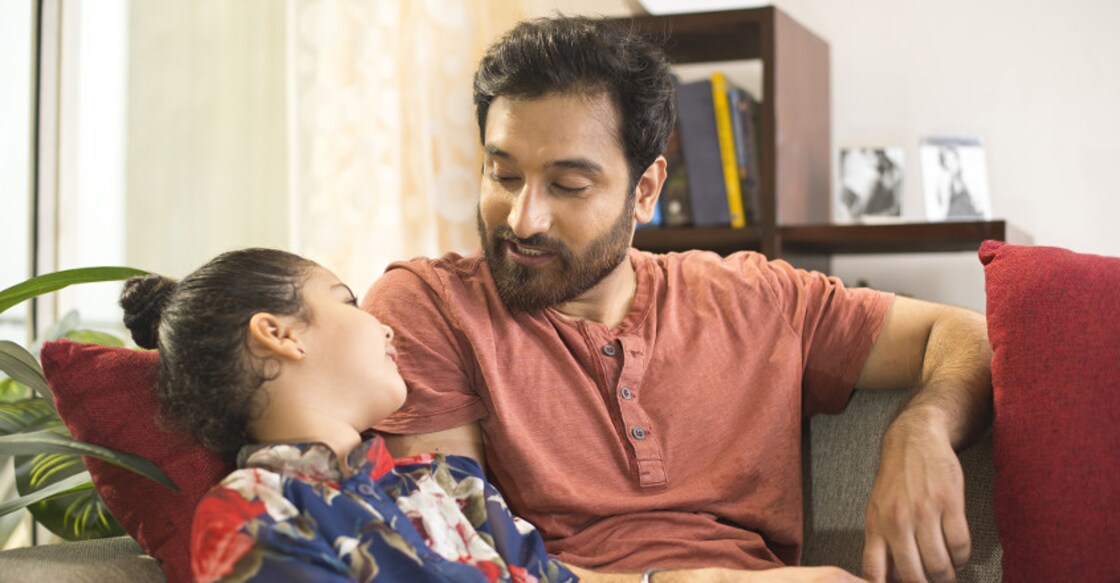How to talk to kids about disabilities

Mail This Article
The list of topics that adults and parents, especially Indian ones, will never deign to discuss with their children is, I believe, unfortunately long. As a result, children grow up with half-baked ideas and misplaced notions, which could all have been avoided by providing them with the right information at the right time.
Unfortunately, one of the topics in the above mentioned list is disabilities, and persons with disabilities. It is completely natural for children to have doubts and questions about peers, relatives, acquaintances or strangers with disabilities. Far too often, their doubts and questions are squelched with a “don’t stare”, or an even worse “How sad… the poor child”.
It is important to talk to kids, our future generations, about disabilities, as it is to talk about gender, religion, race, etc. Why, you ask? To dispel myths, quell prejudices, and put an end to name-calling and bullying. Another reason why this is important is because not having their questions answered will force the child to take their cues from others on how to talk about and act towards persons with disabilities, which might not always be a good thing, considering the prejudices and misconceptions the world holds about us.
Afraid? Don’t know what to say? Follow these pointers to prep for that inevitable conversation. Here are some tips to help you.
1.It’s okay
Kids, especially young ones, are naturally curious, so when they see someone with a disability, their first instinct is to ask about it. If you see your child staring at someone with a disability, take the lead and start a conversation. Let your child know (and understand this yourself) that it is okay to notice people with disabilities. Tell them that they are to come to you if they have questions, and answer the ones they do have.

2. Keep emotions out of the conversation
Try to keep your emotions out of your conversation. If you say someone’s disability is “sad” or “awful,” your child may pity the person, and that won’t be helpful. Unfortunately, most adults aren’t always willing to let go of their prejudices, but at least try not to instill them into future generations as well.
3. Keep explanations positive
Try to keep your explanations positive. For example, explain that hearing aids help others hear and wheelchairs help others move around, instead of using a negative connotation (he can't hear, she can't walk, etc.) For example, "I see you looking at that little girl in the wheelchair, and you might be wondering why she needs it. Some people's muscles work a little differently, and her wheelchair helps her move around, just like your legs help you."
4. Emphasize similarities
It's important that your child learns that someone with a disability is still the same in a lot of ways — she has feelings, likes to have fun, loves her family, and has a favorite sport. Take care to separate the person from his or her disability by talking to your child about how she is similar to the person with a disability.
For example, maybe the child’s classmate who has Down syndrome both love to watch football and go swimming. Perhaps they are the same age, or maybe they both have a pet fish. Talking about similarities will show your child that having a disability does not define a person, much like your child's physical characteristics don't define her.
5. Use respectful terminology
Remember that the children in your life emulate you (and the other adults in their lives). They take cues from you on how to treat and talk about people with disabilities. It is hence very important for you to use respectful and non-offensive terminology while talking to them about disabilities. Remember that words can actually hurt so it's important not to use terminology that would make someone feel left out, or imply that they are "less than" anyone else. Avoid using derogatory terms like "cripple," "retarded," or "midget," and instead, use terms and phrases like "wheelchair user," "little person," and "he has a learning disability." Don't use a disability as a way to describe an individual. For example, instead of saying "autistic child," it's better to say "a child on the autism spectrum."

Teach your child to use non-offensive terminology as well. Reinforce with your child that name calling — even if meant as a joke — is always unacceptable because it is hurtful. Promote the use of positive language and put a stop to the use of words such as “stupid,” “dumb,” and “retarded.”
6. People with special needs or disabilities are not necessarily sick.
Sometimes it’s hard to come up with the right vocabulary to tell your kids about special needs. Let me gently suggest avoiding the words “sick” and “wrong”—as in,”That boy has a sickness that makes it harder for him to talk to people,” or”Something is wrong with her brain, so she can’t talk as well as you.” Some people are born with special needs, and other disabilities happen as the result of an accident or illness. The disability itself, though, is not a sickness or something bad. Nor is it something other kids can”catch”—an important distinction to make when explaining disabilities to children.
7. Condemn bullying
Children with disabilities are easy targets, and are more prone to bullying from other children, and even adults. Talk to your child about why intentionally hurting another child's feelings is wrong, and teach her to apologize when she has done that. It's important for your child to know that anyone, even someone who looks or acts different, has feelings just like she does, and deserves to be treated nicely and with respect. Let her know that if she ever sees someone being bullied it is important to either intervene or at least let an adult know about it.

8. Treat devices with respect
Teach your child to treat assistive devices, such as canes, wheelchairs, electronic equipments, etc, with respect. Make sure she understands that the devices are there for the use of the person who needs them, and that they are not toys. They should always be touched and handled only with permission.
9. Learn more together
Take time with your child to read and learn more about disabilities to have a better understanding of a person’s experience. There are many great resources online on this topic including books, articles, websites and videos. Read picture books with young children and discuss them afterward. Chapter books with characters who have disabilities are better for older readers. Ask your child about the book when they finish. Television shows, movies and documentaries are another great tool for parents to use.
10. Lead by Example
Above all, understand that your kids opinions and feelings about disabilities and people with disabilities will depend largely on how you treat and / or speak about them. Treat people well, avoid using derogatory words, and lead by example.
Together, let’s join forces to build a world that is more inclusive and accepting of everyone. Talking to your kids, or the kids in your life, about disabilities and persons with disabilities, is a good baby step forward towards building such a world.


